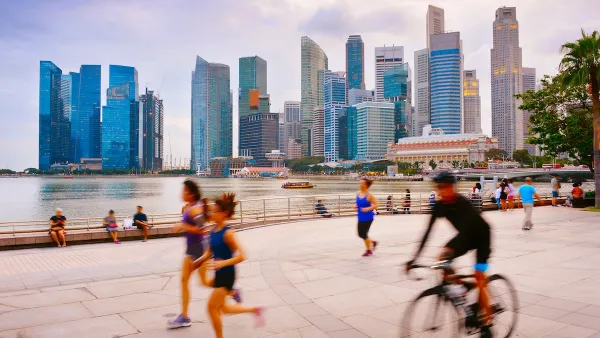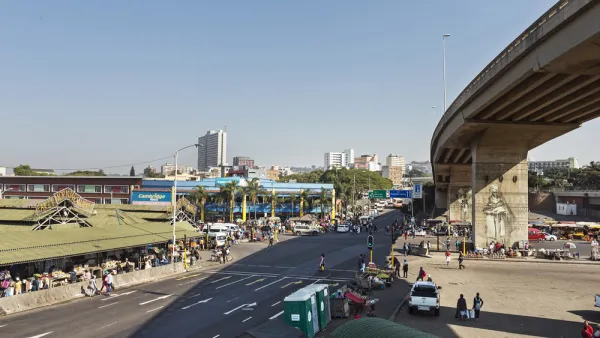Across the strait from Singapore, Iskandar Malaysia is being planned as the world’s next eco mega-city. Its architects and developers hope it will offer an alternative to Asia's polluted cities and a glimpse of the future of urban living.
The plans for Iskandar Malaysia center on environmentally friendly technologies including renewable energy sources, waste recycling, and green spaces for social integration. The Malaysian government expects the mega-city to be the start of "an end to the pollution that afflicts so many of Asia's cities" and "a showcase to be copied on a bigger scale across the region," reports Fiona Harvey.
As the number of urban dwellers in the world surpasses that of rural-dwellers, Iskandar Malaysia is designed to combat the social and environmental impacts of future population growth in southeast Asia. It is expected to house 3 million people by 2025 and could be "a model to countries needing to accommodate the social and economic needs of fast-rising populations and environmental challenges," said Ellis Rubinstein, president of the New York Academy of Sciences.
Currently, $30 billion has been promised for the building of the city, which will include a Legoland and the remote campuses of several UK universities. The track record for previously announced eco-cities has been less than perfect. Good luck Iskandar!
FULL STORY: Iskandar Malaysia - the green mega-city rising above Singapore

National Parks Layoffs Will Cause Communities to Lose Billions
Thousands of essential park workers were laid off this week, just before the busy spring break season.

Retro-silient?: America’s First “Eco-burb,” The Woodlands Turns 50
A master-planned community north of Houston offers lessons on green infrastructure and resilient design, but falls short of its founder’s lofty affordability and walkability goals.

Delivering for America Plan Will Downgrade Mail Service in at Least 49.5 Percent of Zip Codes
Republican and Democrat lawmakers criticize the plan for its disproportionate negative impact on rural communities.

Test News Post 1
This is a summary

Test News Headline 46
Test for the image on the front page.

Balancing Bombs and Butterflies: How the National Guard Protects a Rare Species
The National Guard at Fort Indiantown Gap uses GIS technology and land management strategies to balance military training with conservation efforts, ensuring the survival of the rare eastern regal fritillary butterfly.
Urban Design for Planners 1: Software Tools
This six-course series explores essential urban design concepts using open source software and equips planners with the tools they need to participate fully in the urban design process.
Planning for Universal Design
Learn the tools for implementing Universal Design in planning regulations.
EMC Planning Group, Inc.
Planetizen
Planetizen
Mpact (formerly Rail~Volution)
Great Falls Development Authority, Inc.
HUDs Office of Policy Development and Research
NYU Wagner Graduate School of Public Service




























